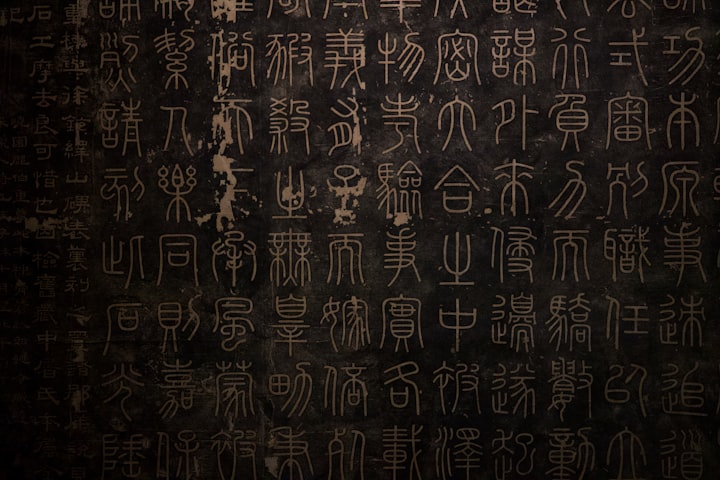Alphabets have a distinctive imprint in the history of writing
The 5 most important alphabets in history

We usually say that the alphabet is the backbone of a language, and that's absolutely true! The alphabet consists of various signs that make it possible to transcribe all the sounds of a language in order to deconstruct them, no matter how complex. The alphabet, then, is the literal translation of each sound that contributes to the formation of a particular word or phrase, whether it has a meaning or not.
With different languages, we notice a great diversity of alphabets or alphabets, you may be involved in translating multiple languages or you may be limited to only one language. In this regard, writing systems were born in different parts of the world and at different times, and it is archaeological discoveries and deciphering ancient manuscripts that helped identify the great alphabets that developed over the centuries.
Here in this topic, we will present the 5 most important alphabets that have a distinctive imprint in the history of writing.
- The Phoenician Alphabet: The Foundation Stone in the History of Writing
The Phoenician alphabet is considered the origin of the modern alphabets, its use dates back to the Phoenicians, who were traders who flourished in the Middle East. The first evidence of its use dates back to 10,000 BC in an area that today corresponds to the Middle East: the present borders of Lebanon, Palestine, Syria and Jordan are based on the remains of ancient Phoenicia.
Inadvertently, the Phoenicians (also called the Canaanites) made a major revolution that would affect all the civilisations that followed, the Alphabet Revolution. They are in fact considered the first to have had the idea of clarifying the sounds of speech by adopting arbitrarily chosen signs and ensuring that they were not forgotten, thus presenting an important invention in the history of writing.
The Phoenician phonetic system consisted of 22 signs, and was based on very simplified representations of things whose names began with this or that sound. The Phoenician alphabet is known to be particularly easy to learn and understand, and it has become one of the most widely used writing systems in the world and has been adopted by many cultures. For example, the Aramaic alphabet (which is similar to Hebrew) is considered a modern form based on the Phoenician alphabet, as is the modern Arabic and Greek alphabets.
- Ancient Egyptian and hieroglyphs
The ancient Egyptian civilisation has always fascinated historians, archaeologists and others interested in the field, and the beauty of hieroglyphs must have a share in this, as its position is still surrounded by secrets to this day, and there is no competitor to the Egyptian civilisation in inventing and using a distinctive alphabet that it developed independently from the rest of other civilisations. Which testifies to a great historical culture.
Hieroglyphs are a group of characters representing natural or man-made creatures, grouped together in a distinctive way that enables them to tell a complete story or form a meaningful message! Hieroglyphs were used especially in tombs and temples and on the funerary treasures of the pharaohs, their wives and children. Today it is estimated that the first hieroglyphs appeared around 3500 BC in the Nile Valley.
You should know that deciphering hieroglyphs in ancient Egypt remained a mystery for a long time until the scientist Jean-François Champollion deciphered them in 1822.
- Chinese Alphabet: Thousands of Symbols
With a total of more than a billion users around the world, a history that exceeds a thousand years and a rich writing that has remained well-established over the centuries, the Chinese syllables are among the most important alphabets that have marked history, and the world still stands in reverence before its symbols.
Chinese mythology attributes the invention of the syllables of the Chinese alphabet to Cang Jie (in 2750 BC), Minister (Huang Di), the legendary Yellow Emperor and godfather of the Chinese nation. Chinese symbols have been enriched century by century, over the dynasties to the present day with it estimated that there are about 50,000 Chinese characters, of which 5,000 are used daily by the Chinese.
Historically, it is difficult to establish an exact birth date for Chinese symbols, but it is estimated that the first use of the Chinese symbol dates back to 6000 or 7000 BC.
- The Greek Alphabet: The Birth of Vowels
The Greek alphabet is closely related to the Phoenician alphabet, which we talked about in the previous lines; The vast majority of those interested in the study of Classical Greek believe that the Greek alphabet was adopted in the eighth century BC based on the Phoenician alphabet and was used by Pythagoras, Herodotus and Plato and was one of the main reasons for the sunrise of Greece throughout ancient Europe.
The Greeks during that era were pragmatic par excellence, they never hesitated to modify the Phoenician alphabet they had adopted and to make modifications to it to suit their own needs based on Greek culture. In this context, pragmatism led to a major development in the history of writing, as the Greek alphabet was the first to adopt the use of vowels, which were then necessary in order to diversify and enhance Greek writing. Thus the letters α (alpha), ε (epsilon), ι, (iota) ο (omicron) and υ (epsilon) were born, declaring a new alphabet, the Greek alphabet, which would then vary from region to region.
- The Latin Alphabet: The West United!
Rome didn't happen overnight, and so does the Latin alphabet! Where it appeared on the Italian peninsula since about the sixth century BC. Historically, the Latin alphabet is derived from the Etruscan alphabet. It is named after the Etruscans (sometimes called Tyrrhenian), a people who arrived in Tuscany around the 7th century BC. The Etruscan alphabet is a product of changing the Greek alphabet to suit this people in an attempt to translate their language phonetically.
After the Etruscan civilisation expanded throughout Italy, many Etruscans were crowned as kings of Rome before the advent of Roman civilisation. Then, during the Roman era, these Etruscans gradually converted to the Latin alphabet, which was adopted by the majority of Germanic languages (such as English or German) and Romance languages. It is estimated that the Latin alphabet is used today by about 40% of the world's population.
About the Creator
Judith Isidore
I'm happy to share my stories with Vocal media community.






Comments
Judith Isidore is not accepting comments at the moment
Want to show your support? Send them a one-off tip.